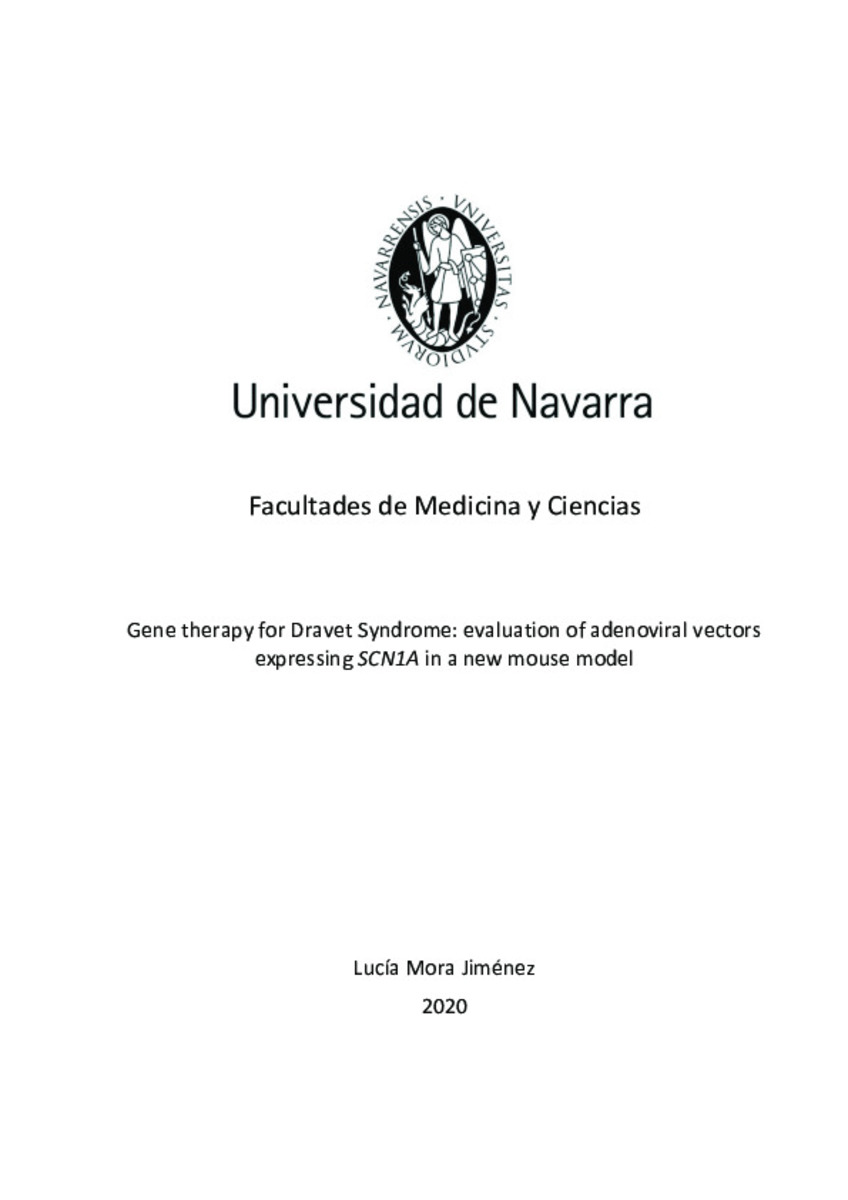Gene therapy for Dravet Syndrome: Evaluation of adenoviral vectors expressing SCN1A in a new mouse model
Palabras clave :
Materias Investigacion::Ciencias de la Salud::Genética
Ingeniería genética
Fecha de publicación :
6-jul-2021
Fecha de la defensa:
18-dic-2020
Editorial :
Universidad de Navarra
Cita:
MORA JIMÉNEZ, Lucía. “Gene therapy for Dravet Syndrome: Evaluation of adenoviral vectors expressing SCN1A in a new mouse model". Hernández, R. y Ricobaraza, A. L. (dirs.). Tesis doctoral. Universidad de Navarra, Pamplona, 2020.
Aparece en las colecciones:
Estadísticas e impacto
0 citas en

0 citas en

Los ítems de Dadun están protegidos por copyright, con todos los derechos reservados, a menos que se indique lo contrario.







